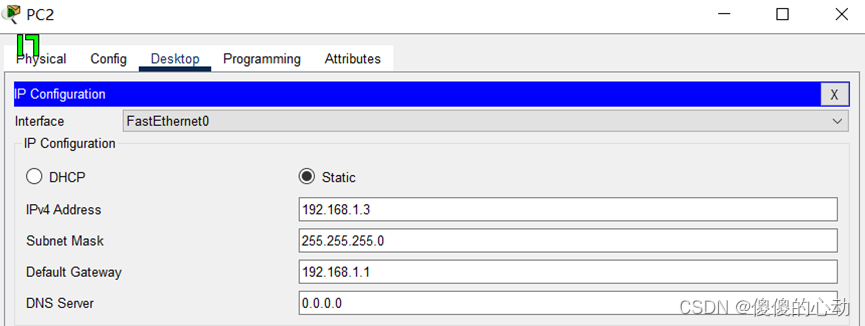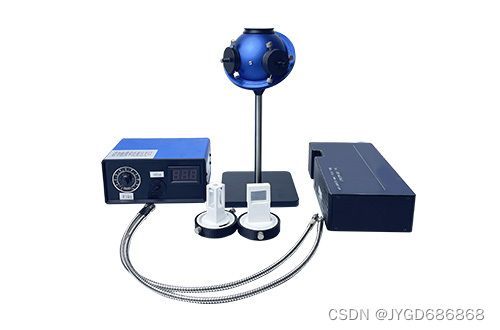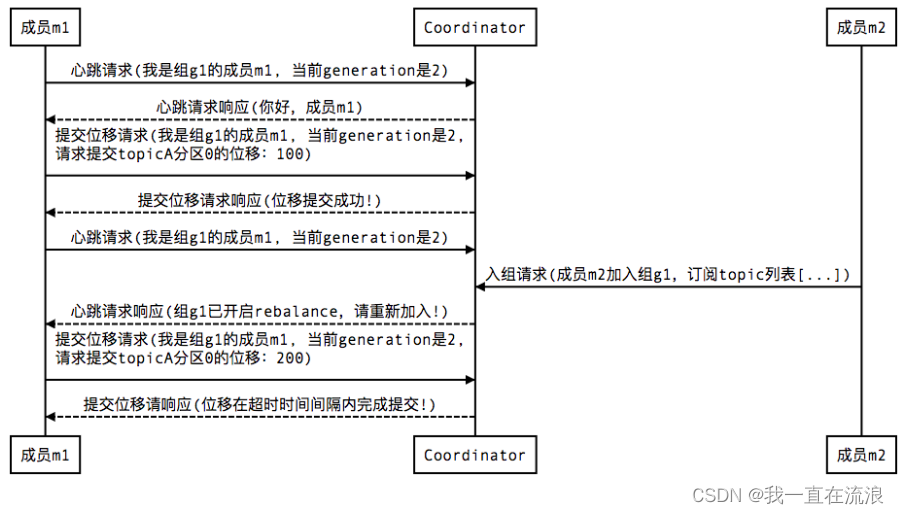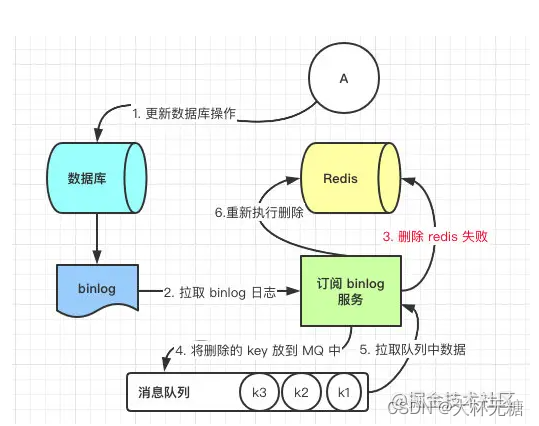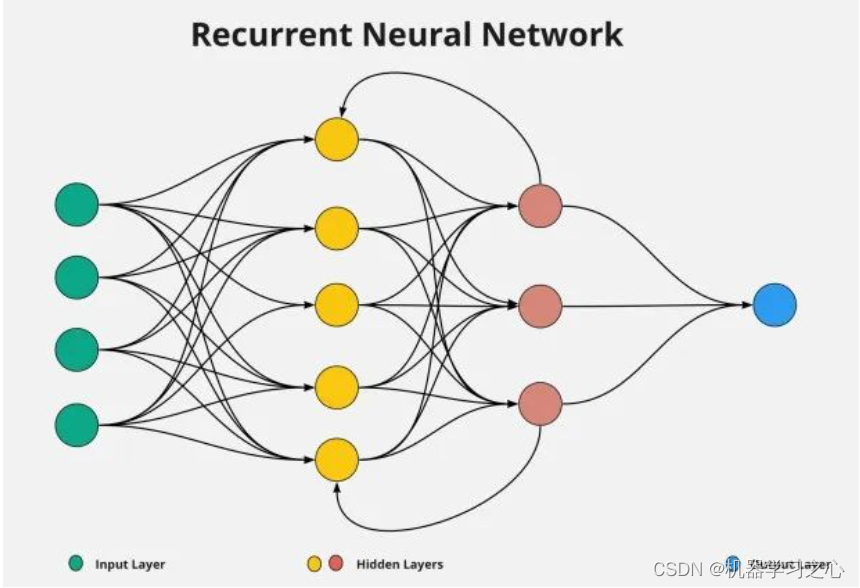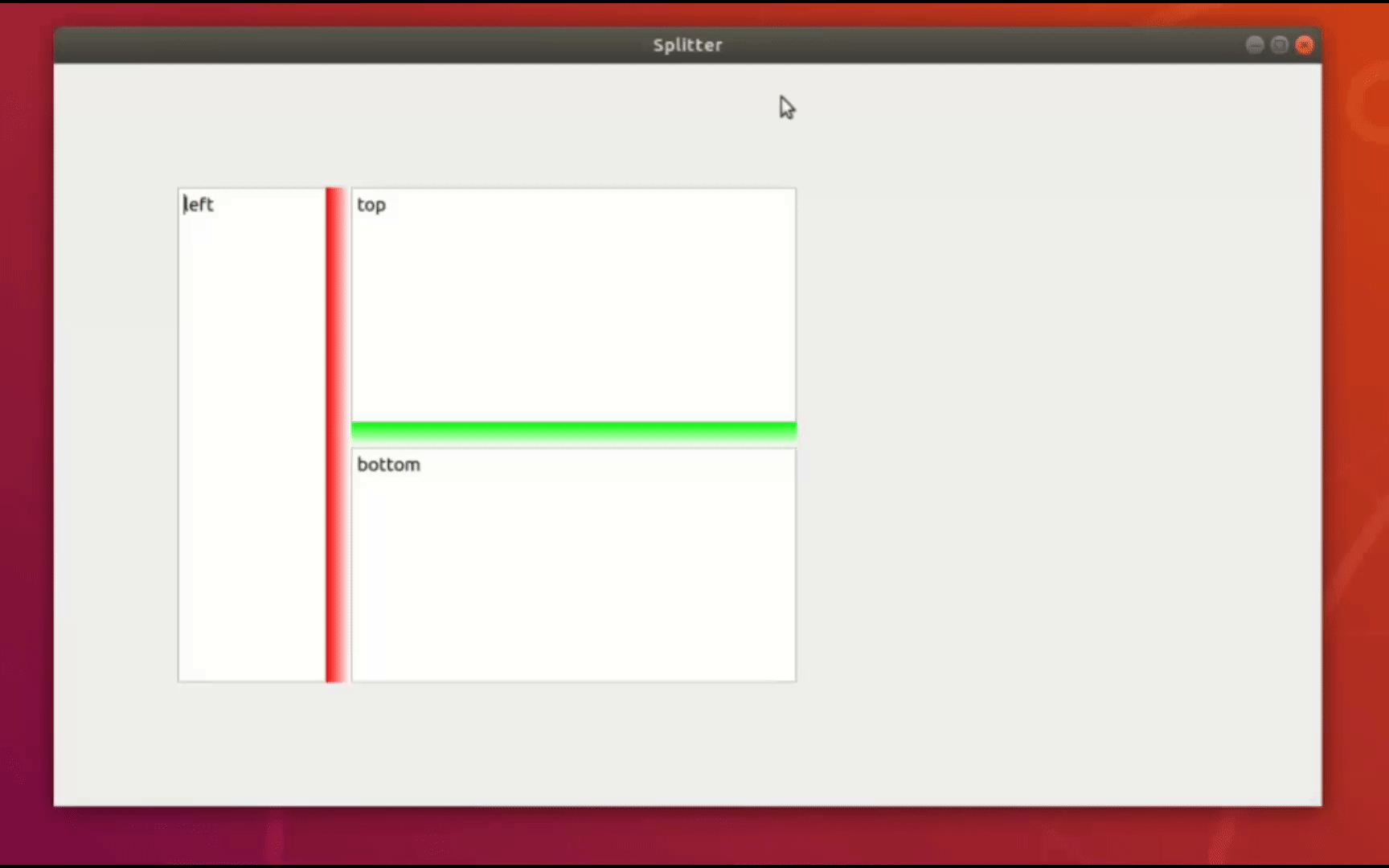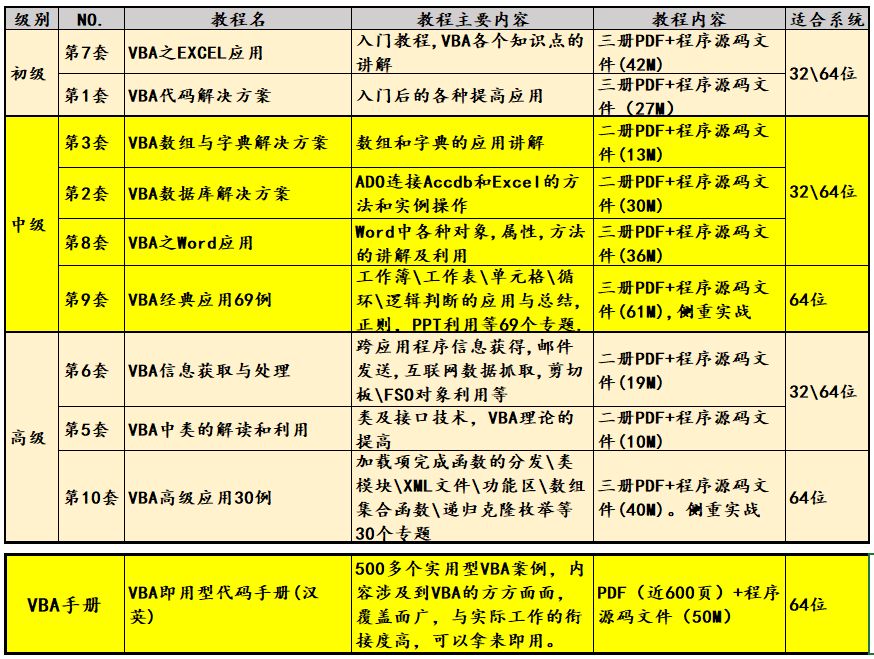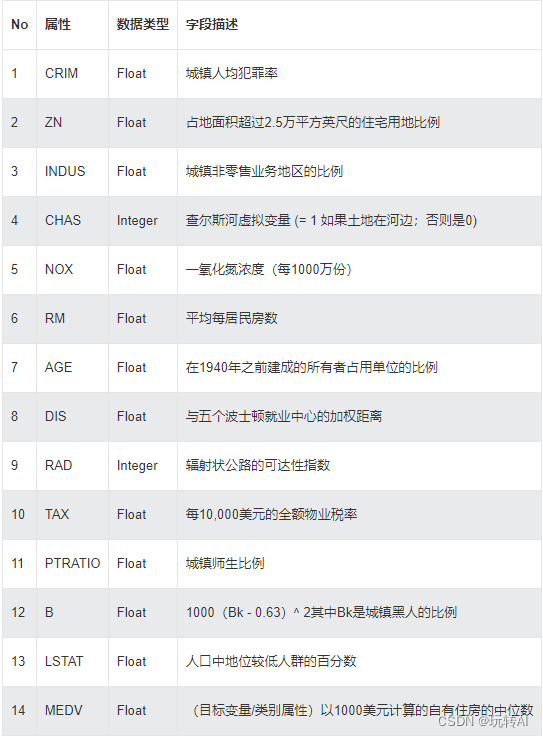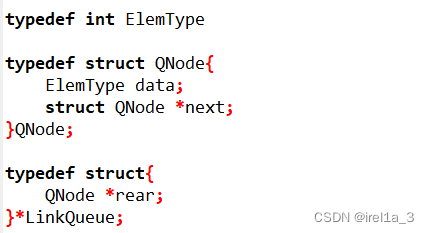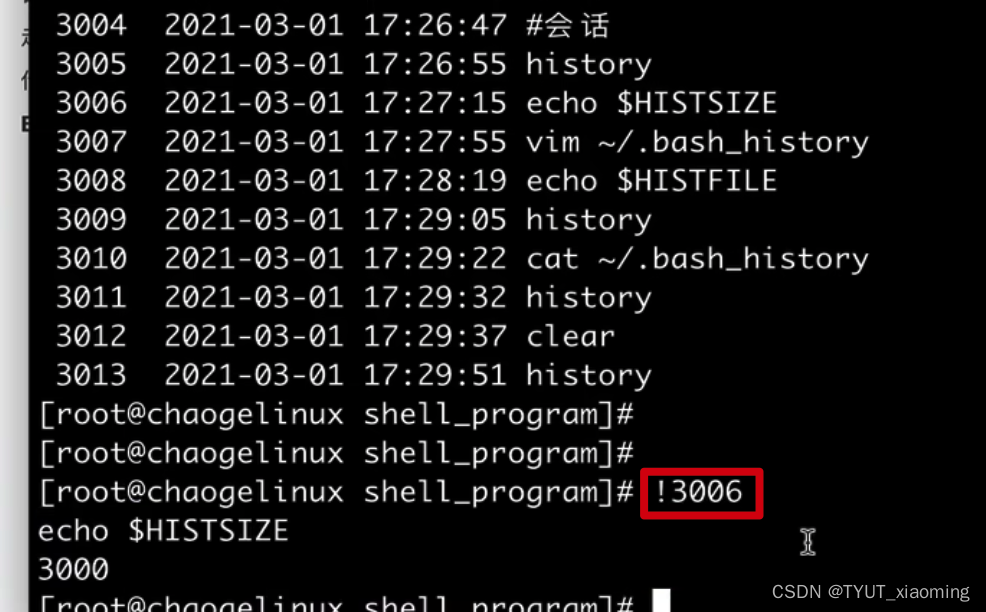目标检测YOLOv3基于DarkNet53模型测试-笔记
预测和试测结果:

预测代码如下所示:
testInsects.py
#YOLOv3网模型测试-单图片文件测试并显示测试结果
import time
import os
import paddle
import numpy as np
import cv2
import random
from PIL import Image, ImageEnhance
import xml.etree.ElementTree as ET
import matplotlib.pyplot as plt
import matplotlib.patches as patches
from matplotlib.image import imread
import YOLOv3 as d
ANCHORS = [10, 13, 16, 30, 33, 23, 30, 61, 62, 45, 59, 119, 116, 90, 156, 198, 373, 326]
ANCHOR_MASKS = [[6, 7, 8], [3, 4, 5], [0, 1, 2]]
VALID_THRESH = 0.01
NMS_TOPK = 400
NMS_POSK = 100
NMS_THRESH = 0.45
NUM_CLASSES = 7
#
# 定义画图函数
INSECT_NAMES = ['Boerner', 'Leconte', 'Linnaeus',
'acuminatus', 'armandi', 'coleoptera', 'linnaeus']
# 定义画矩形框的函数
def draw_rectangle(currentAxis, bbox, edgecolor = 'k', facecolor = 'y', fill=False, linestyle='-'):
# currentAxis,坐标轴,通过plt.gca()获取
# bbox,边界框,包含四个数值的list, [x1, y1, x2, y2]
# edgecolor,边框线条颜色
# facecolor,填充颜色
# fill, 是否填充
# linestype,边框线型
# patches.Rectangle需要传入左上角坐标、矩形区域的宽度、高度等参数
rect=patches.Rectangle((bbox[0], bbox[1]), bbox[2]-bbox[0]+1, bbox[3]-bbox[1]+1, linewidth=1,
edgecolor=edgecolor,facecolor=facecolor,fill=fill, linestyle=linestyle)
currentAxis.add_patch(rect)
# 定义绘制预测结果的函数
def draw_results(result, filename, draw_thresh=0.5):
plt.figure(figsize=(10, 10))
im = imread(filename)
plt.imshow(im)
currentAxis=plt.gca()
colors = ['r', 'g', 'b', 'k', 'y', 'c', 'purple']
for item in result:
box = item[2:6]
label = int(item[0])
name = INSECT_NAMES[label]
if item[1] > draw_thresh:
draw_rectangle(currentAxis, box, edgecolor = colors[label])
plt.text(box[0], box[1], name, fontsize=12, color=colors[label])
# 读取单张测试图片
def single_image_data_loader(filename, test_image_size=608, mode='test'):
"""
加载测试用的图片,测试数据没有groundtruth标签
"""
batch_size= 1
def reader():
batch_data = []
img_size = test_image_size
file_path = os.path.join(filename)
img = cv2.imread(file_path)
img = cv2.cvtColor(img, cv2.COLOR_BGR2RGB)
H = img.shape[0]
W = img.shape[1]
img = cv2.resize(img, (img_size, img_size))
mean = [0.485, 0.456, 0.406]
std = [0.229, 0.224, 0.225]
mean = np.array(mean).reshape((1, 1, -1))
std = np.array(std).reshape((1, 1, -1))
out_img = (img / 255.0 - mean) / std
out_img = out_img.astype('float32').transpose((2, 0, 1))
img = out_img #np.transpose(out_img, (2,0,1))
im_shape = [H, W]
batch_data.append((image_name.split('.')[0], img, im_shape))
if len(batch_data) == batch_size:
yield d.make_test_array(batch_data)
batch_data = []
return reader
#
if __name__ == '__main__':
image_name = './ObjectCheck/data/insects/test/images/2592.jpeg' #2599.jpeg 2592.jpeg /3157.jpeg
params_file_path = './yolo_epoch50.pdparams'
model = d.YOLOv3(num_classes=NUM_CLASSES)
model_state_dict = paddle.load(params_file_path)
model.load_dict(model_state_dict)
model.eval()
total_results = []
test_loader = single_image_data_loader(image_name, mode='test')
for i, data in enumerate(test_loader()):
img_name, img_data, img_scale_data = data
img = paddle.to_tensor(img_data)
img_scale = paddle.to_tensor(img_scale_data)
outputs = model.forward(img)
bboxes, scores = model.get_pred(outputs,
im_shape=img_scale,
anchors=ANCHORS,
anchor_masks=ANCHOR_MASKS,
valid_thresh = VALID_THRESH)
bboxes_data = bboxes.numpy()
scores_data = scores.numpy()
results = d.multiclass_nms(bboxes_data, scores_data,
score_thresh=VALID_THRESH,
nms_thresh=NMS_THRESH,
pre_nms_topk=NMS_TOPK,
pos_nms_topk=NMS_POSK)
result = results[0]
print(result.shape)
draw_results(result, image_name, draw_thresh=0.5)
plt.show()
训练测试代码如下所示:
trans.py
############# 这段代码在本地机器上运行请慎重,容易造成死机#######################
import time
import os
import paddle
import numpy as np
import cv2
import random
from PIL import Image, ImageEnhance
import xml.etree.ElementTree as ET
import YOLOv3 as d
#数据处理
# 创建数据读取类
ANCHORS = [10, 13, 16, 30, 33, 23, 30, 61, 62, 45, 59, 119, 116, 90, 156, 198, 373, 326]
ANCHOR_MASKS = [[6, 7, 8], [3, 4, 5], [0, 1, 2]]
IGNORE_THRESH = .7
NUM_CLASSES = 7
def get_lr(base_lr = 0.0001, lr_decay = 0.1):
bd = [10000, 20000]
lr = [base_lr, base_lr * lr_decay, base_lr * lr_decay * lr_decay]
learning_rate = paddle.optimizer.lr.PiecewiseDecay(boundaries=bd, values=lr)
return learning_rate
if __name__ == '__main__':
TRAINDIR = './ObjectCheck/data/insects/train'
TESTDIR = './ObjectCheck/data/insects/test'
VALIDDIR = './ObjectCheck/data/insects/val'
paddle.device.set_device("gpu:0")
# 创建数据读取类
train_dataset = d.TrainDataset(TRAINDIR, mode='train')
valid_dataset = d.TrainDataset(VALIDDIR, mode='valid')
test_dataset = d.TrainDataset(VALIDDIR, mode='valid')
# 使用paddle.io.DataLoader创建数据读取器,并设置batchsize,进程数量num_workers等参数
train_loader = paddle.io.DataLoader(train_dataset, batch_size=10, shuffle=True, num_workers=0, drop_last=True, use_shared_memory=False)
valid_loader = paddle.io.DataLoader(valid_dataset, batch_size=10, shuffle=False, num_workers=0, drop_last=False, use_shared_memory=False)
model = d.YOLOv3(num_classes = NUM_CLASSES) #创建模型
learning_rate = get_lr()
opt = paddle.optimizer.Momentum(
learning_rate=learning_rate,
momentum=0.9,
weight_decay=paddle.regularizer.L2Decay(0.0005),
parameters=model.parameters()) #创建优化器
# opt = paddle.optimizer.Adam(learning_rate=learning_rate, weight_decay=paddle.regularizer.L2Decay(0.0005), parameters=model.parameters())
MAX_EPOCH = 200
for epoch in range(MAX_EPOCH):
for i, data in enumerate(train_loader()):
img, gt_boxes, gt_labels, img_scale = data
gt_scores = np.ones(gt_labels.shape).astype('float32')
gt_scores = paddle.to_tensor(gt_scores)
img = paddle.to_tensor(img)
gt_boxes = paddle.to_tensor(gt_boxes)
gt_labels = paddle.to_tensor(gt_labels)
outputs = model(img) #前向传播,输出[P0, P1, P2]
loss = model.get_loss(outputs, gt_boxes, gt_labels, gtscore=gt_scores,
anchors = ANCHORS,
anchor_masks = ANCHOR_MASKS,
ignore_thresh=IGNORE_THRESH,
use_label_smooth=False) # 计算损失函数
loss.backward() # 反向传播计算梯度
opt.step() # 更新参数
opt.clear_grad()
if i % 10 == 0:
timestring = time.strftime("%Y-%m-%d %H:%M:%S",time.localtime(time.time()))
print('{}[TRAIN]epoch {}, iter {}, output loss: {}'.format(timestring, epoch, i, loss.numpy()))
# save params of model
if (epoch % 5 == 0) or (epoch == MAX_EPOCH -1):
paddle.save(model.state_dict(), 'yolo_epoch{}'.format(epoch))
# 每个epoch结束之后在验证集上进行测试
model.eval()
for i, data in enumerate(valid_loader()):
img, gt_boxes, gt_labels, img_scale = data
gt_scores = np.ones(gt_labels.shape).astype('float32')
gt_scores = paddle.to_tensor(gt_scores)
img = paddle.to_tensor(img)
gt_boxes = paddle.to_tensor(gt_boxes)
gt_labels = paddle.to_tensor(gt_labels)
outputs = model(img)
loss = model.get_loss(outputs, gt_boxes, gt_labels, gtscore=gt_scores,
anchors = ANCHORS,
anchor_masks = ANCHOR_MASKS,
ignore_thresh=IGNORE_THRESH,
use_label_smooth=False)
if i % 1 == 0:
timestring = time.strftime("%Y-%m-%d %H:%M:%S",time.localtime(time.time()))
print('{}[VALID]epoch {}, iter {}, output loss: {}'.format(timestring, epoch, i, loss.numpy()))
model.train()
'''
#输出结果:
PS E:\project\python> & D:/ProgramData/Anaconda3/python.exe e:/project/python/ObjectCheck/train.py
{'Boerner': 0, 'Leconte': 1, 'Linnaeus': 2, 'acuminatus': 3, 'armandi': 4, 'coleoptera': 5, 'linnaeus': 6}
W0808 17:32:42.379954 11784 gpu_resources.cc:61] Please NOTE: device: 0, GPU Compute Capability: 6.1, Driver API Version: 12.2, Runtime API Version: 10.2
W0808 17:32:42.388298 11784 gpu_resources.cc:91] device: 0, cuDNN Version: 7.6.
e:\project\python\ObjectCheck\YOLOv3.py:525: DeprecationWarning: LANCZOS is deprecated and will be removed in Pillow 10 (2023-07-01). Use Resampling.LANCZOS instead.
crop[1] + crop[3])).resize(img.size, Image.LANCZOS)
D:\ProgramData\Anaconda3\lib\site-packages\paddle\nn\layer\norm.py:712: UserWarning: When training, we now always track global mean and variance.
warnings.warn(
2023-08-08 17:33:00[TRAIN]epoch 0, iter 0, output loss: [17514.3]
2023-08-08 17:37:04[TRAIN]epoch 0, iter 10, output loss: [664.46826]
2023-08-08 17:41:14[TRAIN]epoch 0, iter 20, output loss: [178.863]
2023-08-08 17:45:23[TRAIN]epoch 0, iter 30, output loss: [96.15729]
2023-08-08 17:49:20[TRAIN]epoch 0, iter 40, output loss: [126.4073]
2023-08-08 17:53:24[TRAIN]epoch 0, iter 50, output loss: [99.16821]
2023-08-08 17:57:51[TRAIN]epoch 0, iter 60, output loss: [78.51326]
2023-08-08 18:01:54[TRAIN]epoch 0, iter 70, output loss: [73.76933]
2023-08-08 18:06:02[TRAIN]epoch 0, iter 80, output loss: [95.99153]
2023-08-08 18:10:03[TRAIN]epoch 0, iter 90, output loss: [65.16132]
2023-08-08 18:14:08[TRAIN]epoch 0, iter 100, output loss: [65.93103]
2023-08-08 18:18:14[TRAIN]epoch 0, iter 110, output loss: [71.1369]
2023-08-08 18:22:22[TRAIN]epoch 0, iter 120, output loss: [75.29985]
2023-08-08 18:26:25[TRAIN]epoch 0, iter 130, output loss: [53.242706]
2023-08-08 18:30:28[TRAIN]epoch 0, iter 140, output loss: [54.256916]
2023-08-08 18:34:25[TRAIN]epoch 0, iter 150, output loss: [69.66019]
2023-08-08 18:38:15[TRAIN]epoch 0, iter 160, output loss: [65.595924]
2023-08-08 18:42:06[VALID]epoch 0, iter 0, output loss: [69.894264]
PS E:\project\python>
'''
模型和相关函数定义文件
JOLOv3.py
import time
import os
import paddle
import numpy as np
import cv2
import random
from PIL import Image, ImageEnhance
import xml.etree.ElementTree as ET
import paddle.nn.functional as F
#insect name to map number[0,6]
INSECT_NAMES = ['Boerner', 'Leconte', 'Linnaeus',
'acuminatus', 'armandi', 'coleoptera', 'linnaeus']
def get_insect_names():
"""
return a dict, as following,
{'Boerner': 0,
'Leconte': 1,
'Linnaeus': 2,
'acuminatus': 3,
'armandi': 4,
'coleoptera': 5,
'linnaeus': 6
}
It can map the insect name into an integer label.
"""
insect_category2id = {}
for i, item in enumerate(INSECT_NAMES):
insect_category2id[item] = i
return insect_category2id
cname2cid = get_insect_names()
print(cname2cid) #{'Boerner': 0, 'Leconte': 1, 'Linnaeus': 2, 'acuminatus': 3, 'armandi': 4, 'coleoptera': 5, 'linnaeus': 6}
#=======================================================================================
#网络模型设计
class YOLOv3(paddle.nn.Layer):
def __init__(self, num_classes=7):
super(YOLOv3,self).__init__()
self.num_classes = num_classes
# 提取图像特征的骨干代码
self.block = DarkNet53_conv_body()
self.block_outputs = []
self.yolo_blocks = []
self.route_blocks_2 = []
# 生成3个层级的特征图P0, P1, P2
for i in range(3):
# 添加从ci生成ri和ti的模块
yolo_block = self.add_sublayer(
"yolo_detecton_block_%d" % (i),
YoloDetectionBlock(
ch_in=512//(2**i)*2 if i==0 else 512//(2**i)*2 + 512//(2**i),
ch_out = 512//(2**i)))
self.yolo_blocks.append(yolo_block)
num_filters = 3 * (self.num_classes + 5)
# 添加从ti生成pi的模块,这是一个Conv2D操作,输出通道数为3 * (num_classes + 5)
block_out = self.add_sublayer(
"block_out_%d" % (i),
paddle.nn.Conv2D(in_channels=512//(2**i)*2,
out_channels=num_filters,
kernel_size=1,
stride=1,
padding=0,
weight_attr=paddle.ParamAttr(
initializer=paddle.nn.initializer.Normal(0., 0.02)),
bias_attr=paddle.ParamAttr(
initializer=paddle.nn.initializer.Constant(0.0),
regularizer=paddle.regularizer.L2Decay(0.))))
self.block_outputs.append(block_out)
if i < 2:
# 对ri进行卷积
route = self.add_sublayer("route2_%d"%i,
ConvBNLayer(ch_in=512//(2**i),
ch_out=256//(2**i),
kernel_size=1,
stride=1,
padding=0))
self.route_blocks_2.append(route)
# 将ri放大以便跟c_{i+1}保持同样的尺寸
self.upsample = Upsample()
def forward(self, inputs):
outputs = []
blocks = self.block(inputs)
for i, block in enumerate(blocks):
if i > 0:
# 将r_{i-1}经过卷积和上采样之后得到特征图,与这一级的ci进行拼接
block = paddle.concat([route, block], axis=1)
# 从ci生成ti和ri
route, tip = self.yolo_blocks[i](block)
# 从ti生成pi
block_out = self.block_outputs[i](tip)
# 将pi放入列表
outputs.append(block_out)
if i < 2:
# 对ri进行卷积调整通道数
route = self.route_blocks_2[i](route)
# 对ri进行放大,使其尺寸和c_{i+1}保持一致
route = self.upsample(route)
return outputs
def get_loss(self, outputs, gtbox, gtlabel, gtscore=None,
anchors = [10, 13, 16, 30, 33, 23, 30, 61, 62, 45, 59, 119, 116, 90, 156, 198, 373, 326],
anchor_masks = [[6, 7, 8], [3, 4, 5], [0, 1, 2]],
ignore_thresh=0.7,
use_label_smooth=False):
"""
使用paddle.vision.ops.yolo_loss,直接计算损失函数,过程更简洁,速度也更快
"""
self.losses = []
downsample = 32
for i, out in enumerate(outputs): # 对三个层级分别求损失函数
anchor_mask_i = anchor_masks[i]
loss = paddle.vision.ops.yolo_loss(
x=out, # out是P0, P1, P2中的一个
gt_box=gtbox, # 真实框坐标
gt_label=gtlabel, # 真实框类别
gt_score=gtscore, # 真实框得分,使用mixup训练技巧时需要,不使用该技巧时直接设置为1,形状与gtlabel相同
anchors=anchors, # 锚框尺寸,包含[w0, h0, w1, h1, ..., w8, h8]共9个锚框的尺寸
anchor_mask=anchor_mask_i, # 筛选锚框的mask,例如anchor_mask_i=[3, 4, 5],将anchors中第3、4、5个锚框挑选出来给该层级使用
class_num=self.num_classes, # 分类类别数
ignore_thresh=ignore_thresh, # 当预测框与真实框IoU > ignore_thresh,标注objectness = -1
downsample_ratio=downsample, # 特征图相对于原图缩小的倍数,例如P0是32, P1是16,P2是8
use_label_smooth=False) # 使用label_smooth训练技巧时会用到,这里没用此技巧,直接设置为False
self.losses.append(paddle.mean(loss)) #mean对每张图片求和
downsample = downsample // 2 # 下一级特征图的缩放倍数会减半
return sum(self.losses) # 对每个层级求和
def get_pred(self,
outputs,
im_shape=None,
anchors = [10, 13, 16, 30, 33, 23, 30, 61, 62, 45, 59, 119, 116, 90, 156, 198, 373, 326],
anchor_masks = [[6, 7, 8], [3, 4, 5], [0, 1, 2]],
valid_thresh = 0.01):
downsample = 32
total_boxes = []
total_scores = []
for i, out in enumerate(outputs):
anchor_mask = anchor_masks[i]
anchors_this_level = []
for m in anchor_mask:
anchors_this_level.append(anchors[2 * m])
anchors_this_level.append(anchors[2 * m + 1])
boxes, scores = paddle.vision.ops.yolo_box(
x=out,
img_size=im_shape,
anchors=anchors_this_level,
class_num=self.num_classes,
conf_thresh=valid_thresh,
downsample_ratio=downsample,
name="yolo_box" + str(i))
total_boxes.append(boxes)
total_scores.append(
paddle.transpose(
scores, perm=[0, 2, 1]))
downsample = downsample // 2
yolo_boxes = paddle.concat(total_boxes, axis=1)
yolo_scores = paddle.concat(total_scores, axis=2)
return yolo_boxes, yolo_scores
# 定义数据读取类,继承Paddle.io.Dataset
class TrainDataset(paddle.io.Dataset):
def __init__(self, datadir, mode='train'):
self.datadir = datadir
cname2cid = get_insect_names()
self.records = get_annotations(cname2cid, datadir)
self.img_size = 640 #get_img_size(mode)
def __getitem__(self, idx):
record = self.records[idx]
# print("print: ", record)
img, gt_bbox, gt_labels, im_shape = get_img_data(record, size=self.img_size)
return img, gt_bbox, gt_labels, np.array(im_shape)
def __len__(self):
return len(self.records)
# 非极大值抑制
def nms(bboxes, scores, score_thresh, nms_thresh, pre_nms_topk, i=0, c=0):
"""
nms
"""
inds = np.argsort(scores)
inds = inds[::-1]
keep_inds = []
while(len(inds) > 0):
cur_ind = inds[0]
cur_score = scores[cur_ind]
# if score of the box is less than score_thresh, just drop it
if cur_score < score_thresh:
break
keep = True
for ind in keep_inds:
current_box = bboxes[cur_ind]
remain_box = bboxes[ind]
iou = box_iou_xyxy(current_box, remain_box)
if iou > nms_thresh:
keep = False
break
if i == 0 and c == 4 and cur_ind == 951:
print('suppressed, ', keep, i, c, cur_ind, ind, iou)
if keep:
keep_inds.append(cur_ind)
inds = inds[1:]
return np.array(keep_inds)
# 多分类非极大值抑制
def multiclass_nms(bboxes, scores, score_thresh=0.01, nms_thresh=0.45, pre_nms_topk=1000, pos_nms_topk=100):
"""
This is for multiclass_nms
"""
batch_size = bboxes.shape[0]
class_num = scores.shape[1]
rets = []
for i in range(batch_size):
bboxes_i = bboxes[i]
scores_i = scores[i]
ret = []
for c in range(class_num):
scores_i_c = scores_i[c]
keep_inds = nms(bboxes_i, scores_i_c, score_thresh, nms_thresh, pre_nms_topk, i=i, c=c)
if len(keep_inds) < 1:
continue
keep_bboxes = bboxes_i[keep_inds]
keep_scores = scores_i_c[keep_inds]
keep_results = np.zeros([keep_scores.shape[0], 6])
keep_results[:, 0] = c
keep_results[:, 1] = keep_scores[:]
keep_results[:, 2:6] = keep_bboxes[:, :]
ret.append(keep_results)
if len(ret) < 1:
rets.append(ret)
continue
ret_i = np.concatenate(ret, axis=0)
scores_i = ret_i[:, 1]
if len(scores_i) > pos_nms_topk:
inds = np.argsort(scores_i)[::-1]
inds = inds[:pos_nms_topk]
ret_i = ret_i[inds]
rets.append(ret_i)
return rets
# 计算IoU,矩形框的坐标形式为xyxy,这个函数会被保存在box_utils.py文件中
def box_iou_xyxy(box1, box2):
# 获取box1左上角和右下角的坐标
x1min, y1min, x1max, y1max = box1[0], box1[1], box1[2], box1[3]
# 计算box1的面积
s1 = (y1max - y1min + 1.) * (x1max - x1min + 1.)
# 获取box2左上角和右下角的坐标
x2min, y2min, x2max, y2max = box2[0], box2[1], box2[2], box2[3]
# 计算box2的面积
s2 = (y2max - y2min + 1.) * (x2max - x2min + 1.)
# 计算相交矩形框的坐标
xmin = np.maximum(x1min, x2min)
ymin = np.maximum(y1min, y2min)
xmax = np.minimum(x1max, x2max)
ymax = np.minimum(y1max, y2max)
# 计算相交矩形行的高度、宽度、面积
inter_h = np.maximum(ymax - ymin + 1., 0.)
inter_w = np.maximum(xmax - xmin + 1., 0.)
intersection = inter_h * inter_w
# 计算相并面积
union = s1 + s2 - intersection
# 计算交并比
iou = intersection / union
return iou
#
def get_annotations(cname2cid, datadir):
filenames = os.listdir(os.path.join(datadir, 'annotations', 'xmls'))
records = []
ct = 0
for fname in filenames:
fid = fname.split('.')[0]
fpath = os.path.join(datadir, 'annotations', 'xmls', fname)
img_file = os.path.join(datadir, 'images', fid + '.jpeg')
tree = ET.parse(fpath)
if tree.find('id') is None:
im_id = np.array([ct])
else:
im_id = np.array([int(tree.find('id').text)])
objs = tree.findall('object')
im_w = float(tree.find('size').find('width').text)
im_h = float(tree.find('size').find('height').text)
gt_bbox = np.zeros((len(objs), 4), dtype=np.float32)
gt_class = np.zeros((len(objs), ), dtype=np.int32)
is_crowd = np.zeros((len(objs), ), dtype=np.int32)
difficult = np.zeros((len(objs), ), dtype=np.int32)
for i, obj in enumerate(objs):
cname = obj.find('name').text
gt_class[i] = cname2cid[cname]
_difficult = int(obj.find('difficult').text)
x1 = float(obj.find('bndbox').find('xmin').text)
y1 = float(obj.find('bndbox').find('ymin').text)
x2 = float(obj.find('bndbox').find('xmax').text)
y2 = float(obj.find('bndbox').find('ymax').text)
x1 = max(0, x1)
y1 = max(0, y1)
x2 = min(im_w - 1, x2)
y2 = min(im_h - 1, y2)
# 这里使用xywh格式来表示目标物体真实框
gt_bbox[i] = [(x1+x2)/2.0 , (y1+y2)/2.0, x2-x1+1., y2-y1+1.]
is_crowd[i] = 0
difficult[i] = _difficult
voc_rec = {
'im_file': img_file,
'im_id': im_id,
'h': im_h,
'w': im_w,
'is_crowd': is_crowd,
'gt_class': gt_class,
'gt_bbox': gt_bbox,
'gt_poly': [],
'difficult': difficult
}
if len(objs) != 0:
records.append(voc_rec)
ct += 1
return records
def get_bbox(gt_bbox, gt_class):
# 对于一般的检测任务来说,一张图片上往往会有多个目标物体
# 设置参数MAX_NUM = 50, 即一张图片最多取50个真实框;如果真实
# 框的数目少于50个,则将不足部分的gt_bbox, gt_class和gt_score的各项数值全设置为0
MAX_NUM = 50
gt_bbox2 = np.zeros((MAX_NUM, 4))
gt_class2 = np.zeros((MAX_NUM,))
for i in range(len(gt_bbox)):
gt_bbox2[i, :] = gt_bbox[i, :]
gt_class2[i] = gt_class[i]
if i >= MAX_NUM:
break
return gt_bbox2, gt_class2
def get_img_data_from_file(record):
"""
record is a dict as following,
record = {
'im_file': img_file,
'im_id': im_id,
'h': im_h,
'w': im_w,
'is_crowd': is_crowd,
'gt_class': gt_class,
'gt_bbox': gt_bbox,
'gt_poly': [],
'difficult': difficult
}
"""
im_file = record['im_file']
h = record['h']
w = record['w']
is_crowd = record['is_crowd']
gt_class = record['gt_class']
gt_bbox = record['gt_bbox']
difficult = record['difficult']
img = cv2.imread(im_file)
img = cv2.cvtColor(img, cv2.COLOR_BGR2RGB)
# check if h and w in record equals that read from img
assert img.shape[0] == int(h), \
"image height of {} inconsistent in record({}) and img file({})".format(
im_file, h, img.shape[0])
assert img.shape[1] == int(w), \
"image width of {} inconsistent in record({}) and img file({})".format(
im_file, w, img.shape[1])
gt_boxes, gt_labels = get_bbox(gt_bbox, gt_class)
# gt_bbox 用相对值
gt_boxes[:, 0] = gt_boxes[:, 0] / float(w)
gt_boxes[:, 1] = gt_boxes[:, 1] / float(h)
gt_boxes[:, 2] = gt_boxes[:, 2] / float(w)
gt_boxes[:, 3] = gt_boxes[:, 3] / float(h)
return img, gt_boxes, gt_labels, (h, w)
# 将 list形式的batch数据 转化成多个array构成的tuple
def make_test_array(batch_data):
img_name_array = np.array([item[0] for item in batch_data])
img_data_array = np.array([item[1] for item in batch_data], dtype = 'float32')
img_scale_array = np.array([item[2] for item in batch_data], dtype='int32')
return img_name_array, img_data_array, img_scale_array
#图像增广
def image_augment(img, gtboxes, gtlabels, size, means=None):
# 随机改变亮暗、对比度和颜色等
img = random_distort(img)
# 随机填充
img, gtboxes = random_expand(img, gtboxes, fill=means)
# 随机裁剪
img, gtboxes, gtlabels, = random_crop(img, gtboxes, gtlabels)
# 随机缩放
img = random_interp(img, size)
# 随机翻转
img, gtboxes = random_flip(img, gtboxes)
# 随机打乱真实框排列顺序
gtboxes, gtlabels = shuffle_gtbox(gtboxes, gtlabels)
return img.astype('float32'), gtboxes.astype('float32'), gtlabels.astype('int32')
#======================================================================================
def random_distort(img):
# 随机改变亮度
def random_brightness(img, lower=0.5, upper=1.5):
e = np.random.uniform(lower, upper)
return ImageEnhance.Brightness(img).enhance(e)
# 随机改变对比度
def random_contrast(img, lower=0.5, upper=1.5):
e = np.random.uniform(lower, upper)
return ImageEnhance.Contrast(img).enhance(e)
# 随机改变颜色
def random_color(img, lower=0.5, upper=1.5):
e = np.random.uniform(lower, upper)
return ImageEnhance.Color(img).enhance(e)
ops = [random_brightness, random_contrast, random_color]
np.random.shuffle(ops)
img = Image.fromarray(img)
img = ops[0](img)
img = ops[1](img)
img = ops[2](img)
img = np.asarray(img)
return img
# 随机填充
def random_expand(img,
gtboxes,
max_ratio=4.,
fill=None,
keep_ratio=True,
thresh=0.5):
if random.random() > thresh:
return img, gtboxes
if max_ratio < 1.0:
return img, gtboxes
h, w, c = img.shape
ratio_x = random.uniform(1, max_ratio)
if keep_ratio:
ratio_y = ratio_x
else:
ratio_y = random.uniform(1, max_ratio)
oh = int(h * ratio_y)
ow = int(w * ratio_x)
off_x = random.randint(0, ow - w)
off_y = random.randint(0, oh - h)
out_img = np.zeros((oh, ow, c))
if fill and len(fill) == c:
for i in range(c):
out_img[:, :, i] = fill[i] * 255.0
out_img[off_y:off_y + h, off_x:off_x + w, :] = img
gtboxes[:, 0] = ((gtboxes[:, 0] * w) + off_x) / float(ow)
gtboxes[:, 1] = ((gtboxes[:, 1] * h) + off_y) / float(oh)
gtboxes[:, 2] = gtboxes[:, 2] / ratio_x
gtboxes[:, 3] = gtboxes[:, 3] / ratio_y
return out_img.astype('uint8'), gtboxes
# 随机裁剪
def random_crop(img,
boxes,
labels,
scales=[0.3, 1.0],
max_ratio=2.0,
constraints=None,
max_trial=50):
if len(boxes) == 0:
return img, boxes
if not constraints:
constraints = [(0.1, 1.0), (0.3, 1.0), (0.5, 1.0), (0.7, 1.0),
(0.9, 1.0), (0.0, 1.0)]
img = Image.fromarray(img)
w, h = img.size
crops = [(0, 0, w, h)]
for min_iou, max_iou in constraints:
for _ in range(max_trial):
scale = random.uniform(scales[0], scales[1])
aspect_ratio = random.uniform(max(1 / max_ratio, scale * scale), \
min(max_ratio, 1 / scale / scale))
crop_h = int(h * scale / np.sqrt(aspect_ratio))
crop_w = int(w * scale * np.sqrt(aspect_ratio))
crop_x = random.randrange(w - crop_w)
crop_y = random.randrange(h - crop_h)
crop_box = np.array([[(crop_x + crop_w / 2.0) / w,
(crop_y + crop_h / 2.0) / h,
crop_w / float(w), crop_h / float(h)]])
iou = multi_box_iou_xywh(crop_box, boxes)
if min_iou <= iou.min() and max_iou >= iou.max():
crops.append((crop_x, crop_y, crop_w, crop_h))
break
while crops:
crop = crops.pop(np.random.randint(0, len(crops)))
crop_boxes, crop_labels, box_num = box_crop(boxes, labels, crop, (w, h))
if box_num < 1:
continue
img = img.crop((crop[0], crop[1], crop[0] + crop[2],
crop[1] + crop[3])).resize(img.size, Image.LANCZOS)
img = np.asarray(img)
return img, crop_boxes, crop_labels
img = np.asarray(img)
return img, boxes, labels
# 随机缩放
def random_interp(img, size, interp=None):
interp_method = [
cv2.INTER_NEAREST,
cv2.INTER_LINEAR,
cv2.INTER_AREA,
cv2.INTER_CUBIC,
cv2.INTER_LANCZOS4,
]
if not interp or interp not in interp_method:
interp = interp_method[random.randint(0, len(interp_method) - 1)]
h, w, _ = img.shape
im_scale_x = size / float(w)
im_scale_y = size / float(h)
img = cv2.resize(
img, None, None, fx=im_scale_x, fy=im_scale_y, interpolation=interp)
return img
# 随机翻转
def random_flip(img, gtboxes, thresh=0.5):
if random.random() > thresh:
img = img[:, ::-1, :]
gtboxes[:, 0] = 1.0 - gtboxes[:, 0]
return img, gtboxes
# 随机打乱真实框排列顺序
def shuffle_gtbox(gtbox, gtlabel):
gt = np.concatenate(
[gtbox, gtlabel[:, np.newaxis]], axis=1)
idx = np.arange(gt.shape[0])
np.random.shuffle(idx)
gt = gt[idx, :]
return gt[:, :4], gt[:, 4]
#======================================================================================
def get_img_data(record, size=640):
img, gt_boxes, gt_labels, scales = get_img_data_from_file(record)
img, gt_boxes, gt_labels = image_augment(img, gt_boxes, gt_labels, size)
mean = [0.485, 0.456, 0.406]
std = [0.229, 0.224, 0.225]
mean = np.array(mean).reshape((1, 1, -1))
std = np.array(std).reshape((1, 1, -1))
img = (img / 255.0 - mean) / std
img = img.astype('float32').transpose((2, 0, 1))
return img, gt_boxes, gt_labels, scales
# 定义上采样模块
class Upsample(paddle.nn.Layer):
def __init__(self, scale=2):
super(Upsample,self).__init__()
self.scale = scale
def forward(self, inputs):
# get dynamic upsample output shape
shape_nchw = paddle.shape(inputs)
shape_hw = paddle.slice(shape_nchw, axes=[0], starts=[2], ends=[4])
shape_hw.stop_gradient = True
in_shape = paddle.cast(shape_hw, dtype='int32')
out_shape = in_shape * self.scale
out_shape.stop_gradient = True
# reisze by actual_shape
out = paddle.nn.functional.interpolate(
x=inputs, scale_factor=self.scale, mode="NEAREST")
return out
#
#======================================================================================
#from paddle net from baidu.com code
class ConvBNLayer(paddle.nn.Layer):
def __init__(self, ch_in, ch_out,
kernel_size=3, stride=1, groups=1,
padding=0, act="leaky"):
super(ConvBNLayer, self).__init__()
self.conv = paddle.nn.Conv2D(
in_channels=ch_in,
out_channels=ch_out,
kernel_size=kernel_size,
stride=stride,
padding=padding,
groups=groups,
weight_attr=paddle.ParamAttr(
initializer=paddle.nn.initializer.Normal(0., 0.02)),
bias_attr=False)
self.batch_norm = paddle.nn.BatchNorm2D(
num_features=ch_out,
weight_attr=paddle.ParamAttr(
initializer=paddle.nn.initializer.Normal(0., 0.02),
regularizer=paddle.regularizer.L2Decay(0.)),
bias_attr=paddle.ParamAttr(
initializer=paddle.nn.initializer.Constant(0.0),
regularizer=paddle.regularizer.L2Decay(0.)))
self.act = act
def forward(self, inputs):
out = self.conv(inputs)
out = self.batch_norm(out)
if self.act == 'leaky':
out = F.leaky_relu(x=out, negative_slope=0.1)
return out
class DownSample(paddle.nn.Layer):
# 下采样,图片尺寸减半,具体实现方式是使用stirde=2的卷积
def __init__(self,
ch_in,
ch_out,
kernel_size=3,
stride=2,
padding=1):
super(DownSample, self).__init__()
self.conv_bn_layer = ConvBNLayer(
ch_in=ch_in,
ch_out=ch_out,
kernel_size=kernel_size,
stride=stride,
padding=padding)
self.ch_out = ch_out
def forward(self, inputs):
out = self.conv_bn_layer(inputs)
return out
class BasicBlock(paddle.nn.Layer):
"""
基本残差块的定义,输入x经过两层卷积,然后接第二层卷积的输出和输入x相加
"""
def __init__(self, ch_in, ch_out):
super(BasicBlock, self).__init__()
self.conv1 = ConvBNLayer(
ch_in=ch_in,
ch_out=ch_out,
kernel_size=1,
stride=1,
padding=0
)
self.conv2 = ConvBNLayer(
ch_in=ch_out,
ch_out=ch_out*2,
kernel_size=3,
stride=1,
padding=1
)
def forward(self, inputs):
conv1 = self.conv1(inputs)
conv2 = self.conv2(conv1)
out = paddle.add(x=inputs, y=conv2)
return out
class LayerWarp(paddle.nn.Layer):
"""
添加多层残差块,组成Darknet53网络的一个层级
"""
def __init__(self, ch_in, ch_out, count, is_test=True):
super(LayerWarp,self).__init__()
self.basicblock0 = BasicBlock(ch_in,
ch_out)
self.res_out_list = []
for i in range(1, count):
res_out = self.add_sublayer("basic_block_%d" % (i), # 使用add_sublayer添加子层
BasicBlock(ch_out*2,
ch_out))
self.res_out_list.append(res_out)
def forward(self,inputs):
y = self.basicblock0(inputs)
for basic_block_i in self.res_out_list:
y = basic_block_i(y)
return y
class YoloDetectionBlock(paddle.nn.Layer):
# define YOLOv3 detection head
# 使用多层卷积和BN提取特征
def __init__(self,ch_in,ch_out,is_test=True):
super(YoloDetectionBlock, self).__init__()
assert ch_out % 2 == 0, \
"channel {} cannot be divided by 2".format(ch_out)
self.conv0 = ConvBNLayer(
ch_in=ch_in,
ch_out=ch_out,
kernel_size=1,
stride=1,
padding=0)
self.conv1 = ConvBNLayer(
ch_in=ch_out,
ch_out=ch_out*2,
kernel_size=3,
stride=1,
padding=1)
self.conv2 = ConvBNLayer(
ch_in=ch_out*2,
ch_out=ch_out,
kernel_size=1,
stride=1,
padding=0)
self.conv3 = ConvBNLayer(
ch_in=ch_out,
ch_out=ch_out*2,
kernel_size=3,
stride=1,
padding=1)
self.route = ConvBNLayer(
ch_in=ch_out*2,
ch_out=ch_out,
kernel_size=1,
stride=1,
padding=0)
self.tip = ConvBNLayer(
ch_in=ch_out,
ch_out=ch_out*2,
kernel_size=3,
stride=1,
padding=1)
def forward(self, inputs):
out = self.conv0(inputs)
out = self.conv1(out)
out = self.conv2(out)
out = self.conv3(out)
route = self.route(out)
tip = self.tip(route)
return route, tip
# 定义Sigmoid函数
def sigmoid(x):
return 1./(1.0 + np.exp(-x))
# 将网络特征图输出的[tx, ty, th, tw]转化成预测框的坐标[x1, y1, x2, y2]
def get_yolo_box_xxyy(pred, anchors, num_classes, downsample):
"""
pred是网络输出特征图转化成的numpy.ndarray
anchors 是一个list。表示锚框的大小,
例如 anchors = [116, 90, 156, 198, 373, 326],表示有三个锚框,
第一个锚框大小[w, h]是[116, 90],第二个锚框大小是[156, 198],第三个锚框大小是[373, 326]
"""
batchsize = pred.shape[0]
num_rows = pred.shape[-2]
num_cols = pred.shape[-1]
input_h = num_rows * downsample
input_w = num_cols * downsample
num_anchors = len(anchors) // 2
# pred的形状是[N, C, H, W],其中C = NUM_ANCHORS * (5 + NUM_CLASSES)
# 对pred进行reshape
pred = pred.reshape([-1, num_anchors, 5+num_classes, num_rows, num_cols])
pred_location = pred[:, :, 0:4, :, :]
pred_location = np.transpose(pred_location, (0,3,4,1,2))
anchors_this = []
for ind in range(num_anchors):
anchors_this.append([anchors[ind*2], anchors[ind*2+1]])
anchors_this = np.array(anchors_this).astype('float32')
# 最终输出数据保存在pred_box中,其形状是[N, H, W, NUM_ANCHORS, 4],
# 其中最后一个维度4代表位置的4个坐标
pred_box = np.zeros(pred_location.shape)
for n in range(batchsize):
for i in range(num_rows):
for j in range(num_cols):
for k in range(num_anchors):
pred_box[n, i, j, k, 0] = j
pred_box[n, i, j, k, 1] = i
pred_box[n, i, j, k, 2] = anchors_this[k][0]
pred_box[n, i, j, k, 3] = anchors_this[k][1]
# 这里使用相对坐标,pred_box的输出元素数值在0.~1.0之间
pred_box[:, :, :, :, 0] = (sigmoid(pred_location[:, :, :, :, 0]) + pred_box[:, :, :, :, 0]) / num_cols
pred_box[:, :, :, :, 1] = (sigmoid(pred_location[:, :, :, :, 1]) + pred_box[:, :, :, :, 1]) / num_rows
pred_box[:, :, :, :, 2] = np.exp(pred_location[:, :, :, :, 2]) * pred_box[:, :, :, :, 2] / input_w
pred_box[:, :, :, :, 3] = np.exp(pred_location[:, :, :, :, 3]) * pred_box[:, :, :, :, 3] / input_h
# 将坐标从xywh转化成xyxy
pred_box[:, :, :, :, 0] = pred_box[:, :, :, :, 0] - pred_box[:, :, :, :, 2] / 2.
pred_box[:, :, :, :, 1] = pred_box[:, :, :, :, 1] - pred_box[:, :, :, :, 3] / 2.
pred_box[:, :, :, :, 2] = pred_box[:, :, :, :, 0] + pred_box[:, :, :, :, 2]
pred_box[:, :, :, :, 3] = pred_box[:, :, :, :, 1] + pred_box[:, :, :, :, 3]
pred_box = np.clip(pred_box, 0., 1.0)
return pred_box
# 挑选出跟真实框IoU大于阈值的预测框
def get_iou_above_thresh_inds(pred_box, gt_boxes, iou_threshold):
batchsize = pred_box.shape[0]
num_rows = pred_box.shape[1]
num_cols = pred_box.shape[2]
num_anchors = pred_box.shape[3]
ret_inds = np.zeros([batchsize, num_rows, num_cols, num_anchors])
for i in range(batchsize):
pred_box_i = pred_box[i]
gt_boxes_i = gt_boxes[i]
for k in range(len(gt_boxes_i)): #gt in gt_boxes_i:
gt = gt_boxes_i[k]
gtx_min = gt[0] - gt[2] / 2.
gty_min = gt[1] - gt[3] / 2.
gtx_max = gt[0] + gt[2] / 2.
gty_max = gt[1] + gt[3] / 2.
if (gtx_max - gtx_min < 1e-3) or (gty_max - gty_min < 1e-3):
continue
x1 = np.maximum(pred_box_i[:, :, :, 0], gtx_min)
y1 = np.maximum(pred_box_i[:, :, :, 1], gty_min)
x2 = np.minimum(pred_box_i[:, :, :, 2], gtx_max)
y2 = np.minimum(pred_box_i[:, :, :, 3], gty_max)
intersection = np.maximum(x2 - x1, 0.) * np.maximum(y2 - y1, 0.)
s1 = (gty_max - gty_min) * (gtx_max - gtx_min)
s2 = (pred_box_i[:, :, :, 2] - pred_box_i[:, :, :, 0]) * (pred_box_i[:, :, :, 3] - pred_box_i[:, :, :, 1])
union = s2 + s1 - intersection
iou = intersection / union
above_inds = np.where(iou > iou_threshold)
ret_inds[i][above_inds] = 1
ret_inds = np.transpose(ret_inds, (0,3,1,2))
return ret_inds.astype('bool')
def label_objectness_ignore(label_objectness, iou_above_thresh_indices):
# 注意:这里不能简单的使用 label_objectness[iou_above_thresh_indices] = -1,
# 这样可能会造成label_objectness为1的点被设置为-1了
# 只有将那些被标注为0,且与真实框IoU超过阈值的预测框才被标注为-1
negative_indices = (label_objectness < 0.5)
ignore_indices = negative_indices * iou_above_thresh_indices
label_objectness[ignore_indices] = -1
return label_objectness
# DarkNet 每组残差块的个数,来自DarkNet的网络结构图
DarkNet_cfg = {53: ([1, 2, 8, 8, 4])}
class DarkNet53_conv_body(paddle.nn.Layer):
def __init__(self):
super(DarkNet53_conv_body, self).__init__()
self.stages = DarkNet_cfg[53]
self.stages = self.stages[0:5]
# 第一层卷积
self.conv0 = ConvBNLayer(
ch_in=3,
ch_out=32,
kernel_size=3,
stride=1,
padding=1)
# 下采样,使用stride=2的卷积来实现
self.downsample0 = DownSample(
ch_in=32,
ch_out=32 * 2)
# 添加各个层级的实现
self.darknet53_conv_block_list = []
self.downsample_list = []
for i, stage in enumerate(self.stages):
conv_block = self.add_sublayer(
"stage_%d" % (i),
LayerWarp(32*(2**(i+1)),
32*(2**i),
stage))
self.darknet53_conv_block_list.append(conv_block)
# 两个层级之间使用DownSample将尺寸减半
for i in range(len(self.stages) - 1):
downsample = self.add_sublayer(
"stage_%d_downsample" % i,
DownSample(ch_in=32*(2**(i+1)),
ch_out=32*(2**(i+2))))
self.downsample_list.append(downsample)
def forward(self,inputs):
out = self.conv0(inputs)
#print("conv1:",out.numpy())
out = self.downsample0(out)
#print("dy:",out.numpy())
blocks = []
for i, conv_block_i in enumerate(self.darknet53_conv_block_list): #依次将各个层级作用在输入上面
out = conv_block_i(out)
blocks.append(out)
if i < len(self.stages) - 1:
out = self.downsample_list[i](out)
return blocks[-1:-4:-1] # 将C0, C1, C2作为返回值
#
def multi_box_iou_xywh(box1, box2):
"""
In this case, box1 or box2 can contain multi boxes.
Only two cases can be processed in this method:
1, box1 and box2 have the same shape, box1.shape == box2.shape
2, either box1 or box2 contains only one box, len(box1) == 1 or len(box2) == 1
If the shape of box1 and box2 does not match, and both of them contain multi boxes, it will be wrong.
"""
assert box1.shape[-1] == 4, "Box1 shape[-1] should be 4."
assert box2.shape[-1] == 4, "Box2 shape[-1] should be 4."
b1_x1, b1_x2 = box1[:, 0] - box1[:, 2] / 2, box1[:, 0] + box1[:, 2] / 2
b1_y1, b1_y2 = box1[:, 1] - box1[:, 3] / 2, box1[:, 1] + box1[:, 3] / 2
b2_x1, b2_x2 = box2[:, 0] - box2[:, 2] / 2, box2[:, 0] + box2[:, 2] / 2
b2_y1, b2_y2 = box2[:, 1] - box2[:, 3] / 2, box2[:, 1] + box2[:, 3] / 2
inter_x1 = np.maximum(b1_x1, b2_x1)
inter_x2 = np.minimum(b1_x2, b2_x2)
inter_y1 = np.maximum(b1_y1, b2_y1)
inter_y2 = np.minimum(b1_y2, b2_y2)
inter_w = inter_x2 - inter_x1
inter_h = inter_y2 - inter_y1
inter_w = np.clip(inter_w, a_min=0., a_max=None)
inter_h = np.clip(inter_h, a_min=0., a_max=None)
inter_area = inter_w * inter_h
b1_area = (b1_x2 - b1_x1) * (b1_y2 - b1_y1)
b2_area = (b2_x2 - b2_x1) * (b2_y2 - b2_y1)
return inter_area / (b1_area + b2_area - inter_area)
def box_crop(boxes, labels, crop, img_shape):
x, y, w, h = map(float, crop)
im_w, im_h = map(float, img_shape)
boxes = boxes.copy()
boxes[:, 0], boxes[:, 2] = (boxes[:, 0] - boxes[:, 2] / 2) * im_w, (
boxes[:, 0] + boxes[:, 2] / 2) * im_w
boxes[:, 1], boxes[:, 3] = (boxes[:, 1] - boxes[:, 3] / 2) * im_h, (
boxes[:, 1] + boxes[:, 3] / 2) * im_h
crop_box = np.array([x, y, x + w, y + h])
centers = (boxes[:, :2] + boxes[:, 2:]) / 2.0
mask = np.logical_and(crop_box[:2] <= centers, centers <= crop_box[2:]).all(
axis=1)
boxes[:, :2] = np.maximum(boxes[:, :2], crop_box[:2])
boxes[:, 2:] = np.minimum(boxes[:, 2:], crop_box[2:])
boxes[:, :2] -= crop_box[:2]
boxes[:, 2:] -= crop_box[:2]
mask = np.logical_and(mask, (boxes[:, :2] < boxes[:, 2:]).all(axis=1))
boxes = boxes * np.expand_dims(mask.astype('float32'), axis=1)
labels = labels * mask.astype('float32')
boxes[:, 0], boxes[:, 2] = (boxes[:, 0] + boxes[:, 2]) / 2 / w, (
boxes[:, 2] - boxes[:, 0]) / w
boxes[:, 1], boxes[:, 3] = (boxes[:, 1] + boxes[:, 3]) / 2 / h, (
boxes[:, 3] - boxes[:, 1]) / h
return boxes, labels, mask.sum()
#
